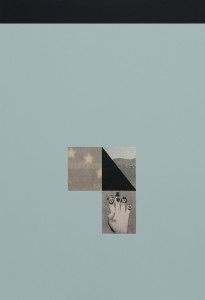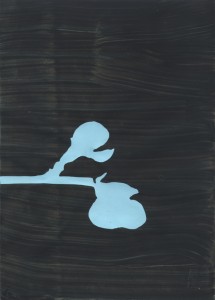Fabio Pistillo: Fine del paesaggio


2-20 maggio 2016
A cura di Francesca Gallo
Fabio Pistillo (Roma, 1973) torna ad AOCF58 con un nuovo ciclo di lavori inediti, in cui si vede maturare un diverso rapporto fra pittura e immagine a stampa, fra sfondo e figura. Pistillo è un pittore che ama i grandi spazi liquidi, in cui annida le sorprese e le insidie della figurazione.
Fine del paesaggio raccoglie lavori eseguiti tra il 2015 e il 2016, in cui il collage di illustrazioni ritagliate da libri, giornali, réclame, si innesta su ampie carte dipinte. Le forme sono talvolta palesi, altre volte quasi nascoste dalla pittura che, in questo modo, agisce come un filtro, le trasforma, in maniera talvolta sorprendente, ironica, ludica.
Il mondo infantile, infatti, è spesso evocato nelle composizioni di Fabio Pistillo data la predilezione per i libri illustrati, la bella grafia, il gioco di parole latente fra forma dipinta e collage, le cancellature che si fanno a loro volta immagine, i ritagli decontestualizzati. Su tutto però campeggiano i profili di un indefinito paesaggio naturale: alberi, colline, fiori si delineano quasi inevitabilmente nel campo dipinto, suggeriti appena da qualche frammento di figurazione, contorno lineare familiare. Da qui il titolo, che allude con leggerezza alla conclusione, o forse al sopravvivere, della pittura di paesaggio?
Fabio Pistillo (Rome, 1973) returns to the AOCF58 gallery with a brand new series of previously unreleased works, in which the viewer will be able to witness the maturation of a different relationship between painting and printed image, background and figure. Pistillo is a painter who loves wide, fluid spaces in which the surprises and pitfalls of figurative representation lurk unsuspected.
A number of works produced in 2015/2016 are collected in his new exhibition “Fine del paesaggio” (End of the landscape), which features collages of images cut out of books, newspapers, and ads, grafted together on large pieces of painted paper. Shapes are at times clear, and at other times nearly hidden by the artist’s painting which thereby acts as a filter, transforming them in a way that can be surprising, ironic, and playful.
Pistillo’s compositions often evoke the world of childhood, thanks to the artist’s predilection for picture books, calligraphy, the latent puns between painted figure and collage, deletions which in turn become images, decontextualized clippings. Every piece of this world, however, is surrounded by the contours of an undefined natural landscape: trees, hills, and flowers all inevitably take shape across the painted space, just barely suggested by some fragment of figurative representation, some familiar outline. Does the title of the exhibition then make a casual allusion to the end of landscape painting, or does it hint at its survival?